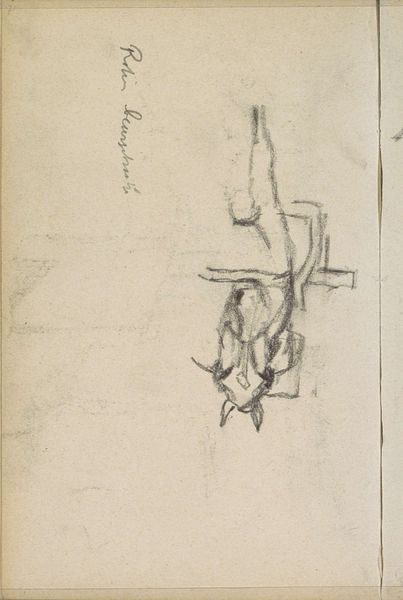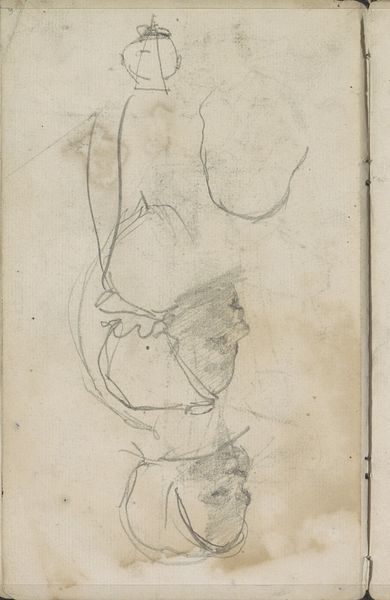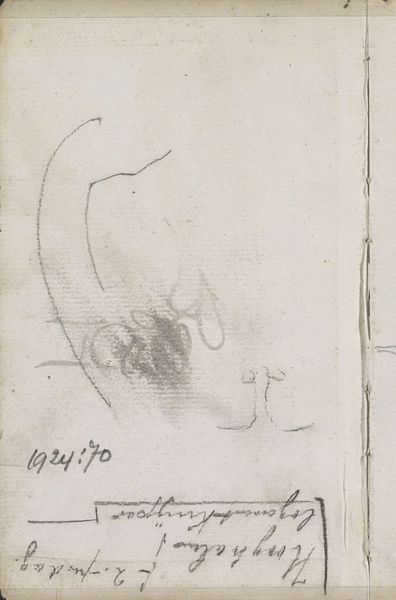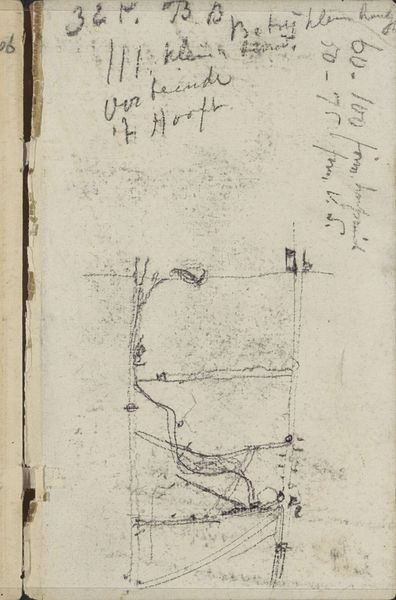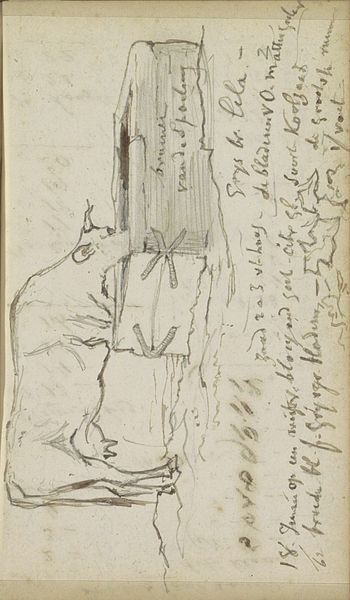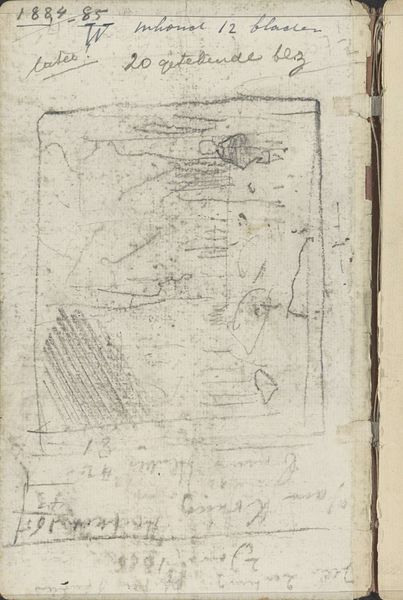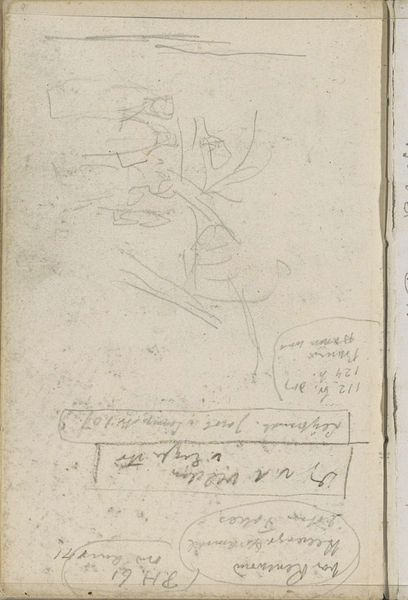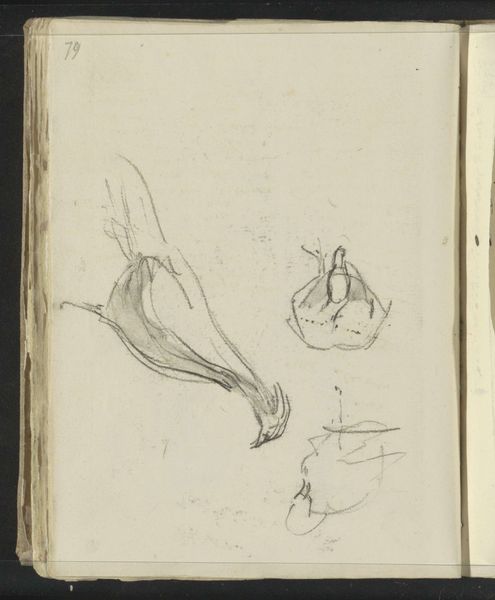
Copyright: Rijks Museum: Open Domain
Editor: So, here we have "Paard," or "Horse," a pencil and graphite drawing by George Hendrik Breitner, dated somewhere between 1902 and 1914. It's currently held at the Rijksmuseum. What immediately strikes me is how raw and immediate it feels, almost like a fleeting impression captured on the page. What do you see in this piece? Curator: This isn't just a drawing of a horse, but an exploration of cultural memory. Breitner, though associated with Impressionism, uses the horse to evoke something deeper than a simple depiction of urban life. In many cultures, the horse is a symbol of power, freedom, and even nobility. Notice how Breitner presents the animal; its downwards direction changes how we should look at this subject, subverting some expectations for its presence. Editor: So, are you suggesting Breitner is consciously playing with the symbolic weight of the horse? The loose lines make it feel so unfinished, so modern. Curator: Precisely. While embracing modern techniques, Breitner is also hinting at the loaded history the image of a horse carries. The quick strokes almost serve as a way to suggest, this figure is important but it may have been forgotten over time, relegated into urban detritus that is written around the subject. He's capturing a moment, yes, but also acknowledging the enduring symbolic presence of the animal in our collective consciousness. What stories do you think it wants to reveal? Editor: I never thought about it that way before. I was so focused on the impressionistic style that I missed the potential cultural commentary. Curator: It is indeed thought-provoking once one connects this kind of symbol and emotional image.
Comments
No comments
Be the first to comment and join the conversation on the ultimate creative platform.


